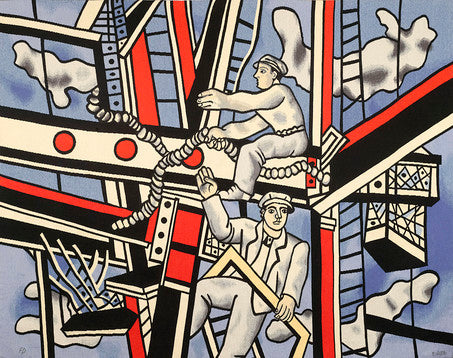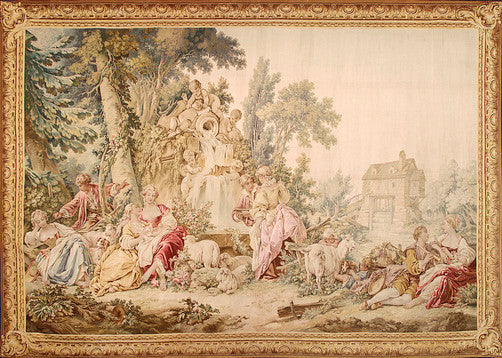
At the ateliers of Aubusson, tapestries are woven today in the same way they were hundreds of years ago. An art both ancient and modern, the tradition of Aubusson woven masterpieces experienced a modern revival in the early twentieth century. Pablo Picasso, Fernand Léger, Georges Braque, Henri Matisse, Marc Chagall – these are just some of the master artists of the 1930s who contributed their works to the ancient art.
From the 13th century, tapestry making was a flourishing art in France. At a time when the upper echelon of society resided in large, expansive estates, tapestries were used to create portable partitions, keep rooms free from drafts, and decorate vast, bare walls. By the Renaissance, tapestries based on painted masterpieces came into vogue, and works by the Old Renaissance Masters were translated into colossal woven masterworks boasting incredibly complicated designs, some incorporating upwards of 600 different colors. The practice continued through the Baroque period, when works by in-demand artists such as François Boucher were commonly re-worked into woven form, often under the guidance of the artists themselves. Yet, by the end of the 18th century, the art of the tapestry experienced a brief decline in popularity, and these grand works and master ateliers would spend the next century fighting for survival in the industry.
The 20th century brought with it a revived interest in the Old Renaissance Masters, and with it an increase in popularity for tapestries from this age. Collectors and art lovers alike snatched up these woven recreations of much loved Renaissance masterworks, which became incredibly valuable on the market. This sudden uptick in interest in Renaissance Aubusson tapestries led some to question why works by the modern masters were not also being translated into the ancient art. It took just one incredibly important and impassioned woman reacting to this question to begin a new history for the Aubusson ateliers.
With the aim of reviving the declining Aubusson ateliers, art collector and patron Madame Marie Cuttoli began commissioning designs from masters of the modern movement. Her greatest contribution was her ability to break the Aubusson houses of their traditional designs, heralding in a new era during which contemporary artists were engaged with designers for the first time in two centuries. Artists such as Picasso, Miro, Braque, Matisse and Léger worked with Aubusson cartoonists and designers to translate their most important works into the medium, creating monumental woven wonders of modern design. In the early 1930s, these tapestries were exhibited side by side with the paintings that had inspired them, and often times the tapestries yielded higher prices than the originals.
One of the most enthusiastic of these collaborative artists was French painter Fernand Léger. Léger’s epic cubist works, such as his monumental Les Constructeurs series, lend themselves well to the art of the tapestry. The expressions of color, the mechanical and geometric elements of his compositions, and the carefully wrought characters of man as engineer all shine through these meticulously woven masterpieces. Delighted by the collaborative process of tapestry design, Léger continued to lend his distinctive geometric designs to Aubusson weavers until his death in 1955.




